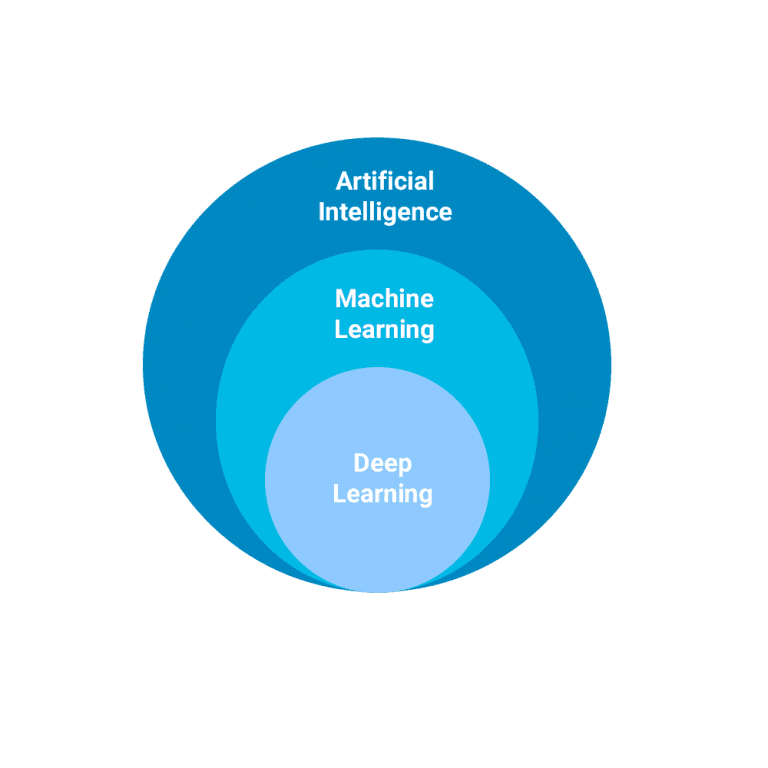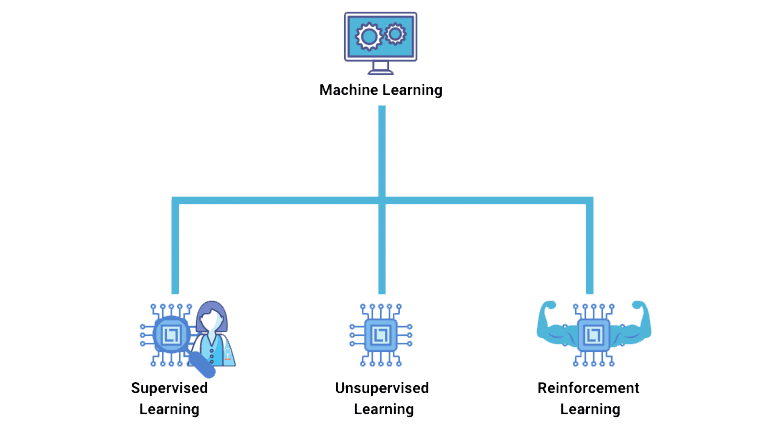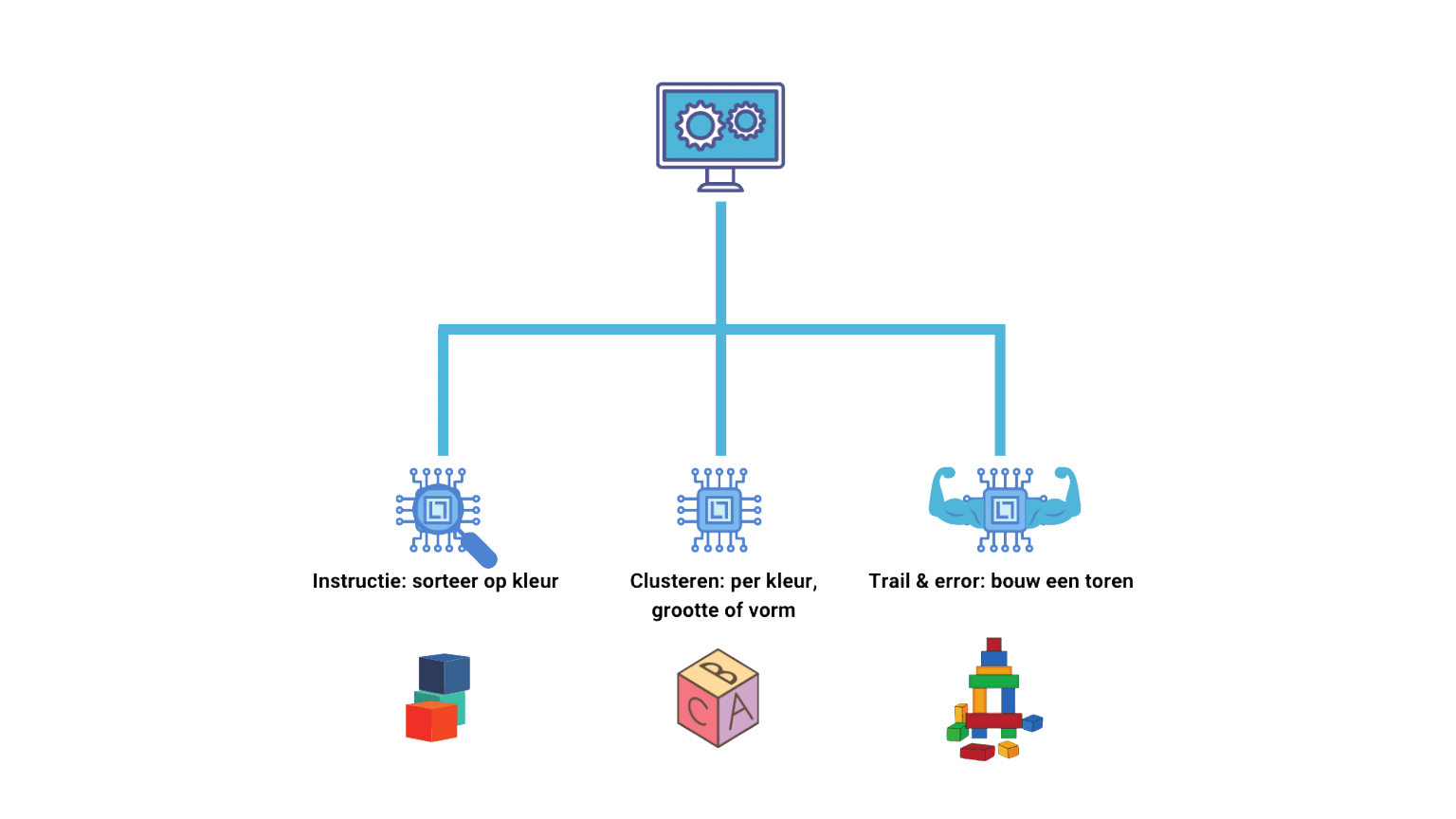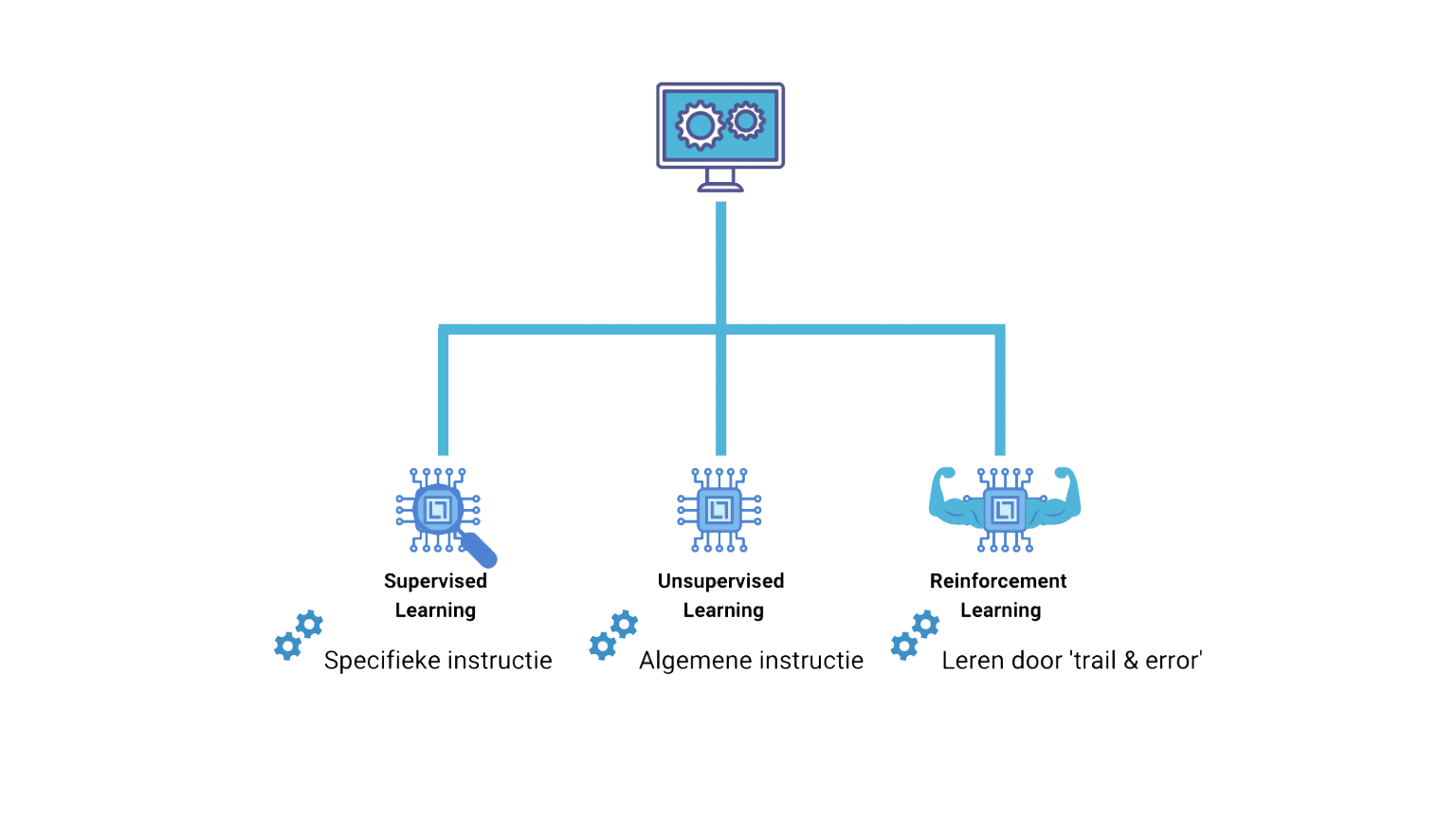The different types of Machine Learning
What is the difference between AI, Machine Learning and Deep Learning?
Imagine an onion with different layers. The outer shell is Artificial Intelligence. This term is often reminiscent of malicious robots that want to take over the world but it is actually just a way to make computers interact more easily with humans.
Machine Learning is the method to teach computers the ability to automatically learn and improve from experience without being explicitly programmed. If we want a computer to recognize a cat we are going to have to show it a lot of pictures of cats. The more pictures the computer gets to see of cats, the better the computer becomes at recognizing cats. So the computer only learns by feeding it a lot of data. This technique is called machine learning and is part of the broader concept of Artificial Intelligence.
At its core, we find Deep Learning. Deep learning is based on multilayer neural networks. Deep Learning is actually a subset of Machine Learning in which layered neural networks learn from large amounts of data. You can compare it to how a human brain works. Deep Learning is used, for example, in image recognition and speech recognition. Or think of AlphaGO from Deepmind Google.

What are the different types of Machine Learning?

Machine Learning consists of three forms: ‘supervised learning’, ‘unsupervised learning’ en ‘reinforcement learning’.
Supervised Learning
Imagine you have a box full of blocks. You instruct the computer to sort all blocks by color. You then get as output a stack of all blocks sorted per color. This is called supervised learning because you give the computer instructions. With supervised learning, there is still human work involved because the computer needs to get clear instructions to achieve the desired result.

Unsupervised Learning
The second form of machine learning is unsupervised learning. You get a new box of blocks but now you instruct the computer to the group on similarities. Because this instruction is not specific enough and leaves room for interpretation, the computer can sort the blocks by color, size or shape. This is called clustering. There is an important difference between supervised and unsupervised learning, not only in the instructions you give but also in the data. With supervised learning, you train the algorithm with labelled data while with unsupervised learning you train the algorithm with unlabelled data. The latter form is, therefore, the least labour-intensive because the human input remains minimal.

Machine Learning always follows the same logic: input of data, processing and output of data.
Reinforcement Learning
Suppose you now instruct the computer to build with the blocks as high as possible. In the first phase, the computer will stack the blocks neatly on top of each other, but that tower will soon fall over. The computer learns that this is not a good way to build a tower. The computer will now try to form a broader base with the blocks. It notes that this is already going better. By’trail & error’ the computer will quickly perfect the art of building a tower. So the computer has adjusted where necessary, this is called reinforcement learning.
